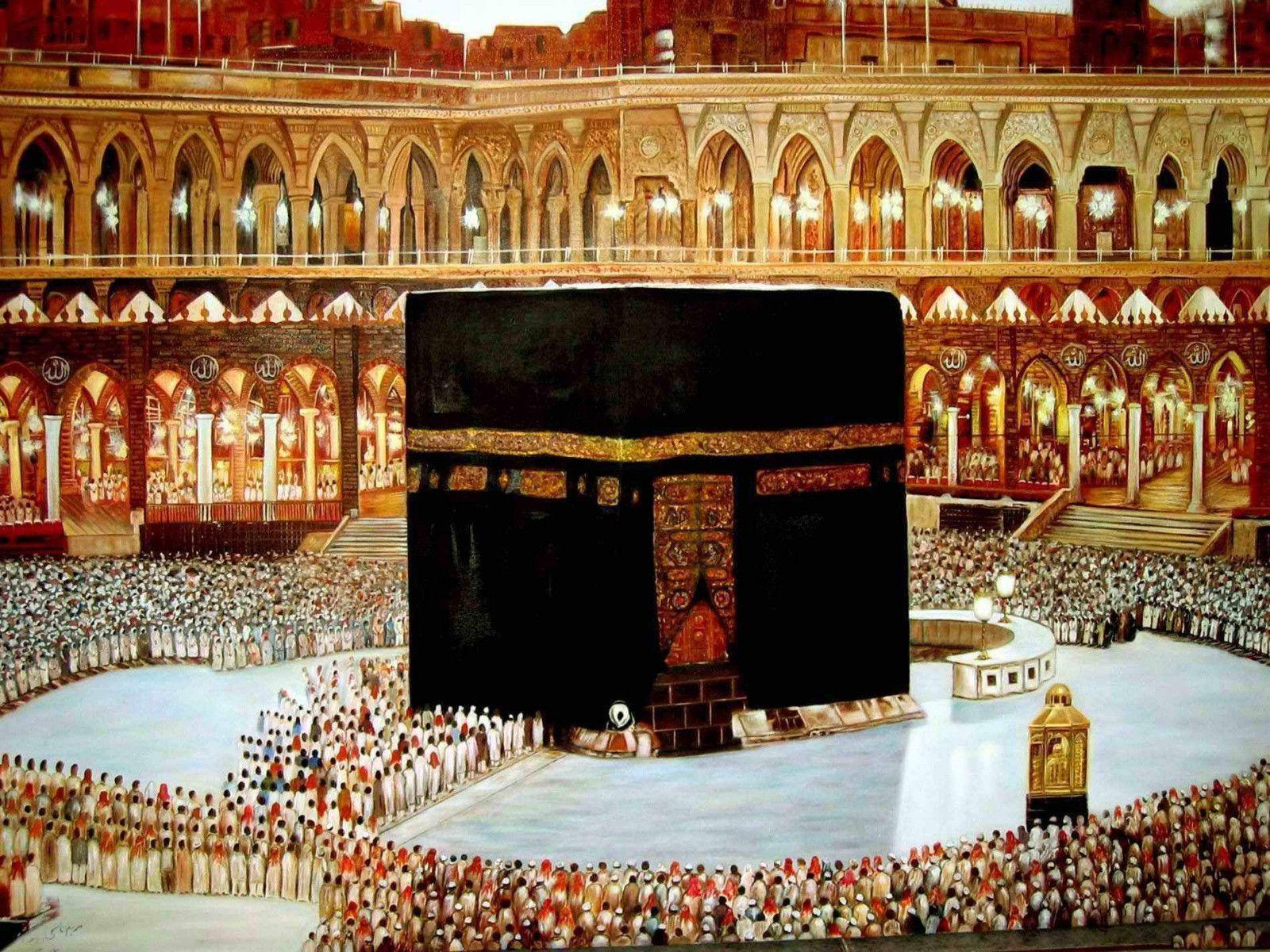HADJ
Kaaba
The Kaaba (Arabic: ٱلْكَعْبَة, romanized: al-Kaʿbah, lit. ‘The Cube’, Arabic pronunciation: [kaʕ.bah]), also spelled Ka’bah or Kabah, sometimes referred to as al-Kaʿbah al-Musharrafah (Arabic: ٱلْكَعْبَة ٱلْمُشَرَّفَة, romanized: al-Kaʿbah al-Musharrafah, lit. ‘Honored Ka’bah’), is a building at the center of Islam’s most important mosque, the Masjid al-Haram in Mecca, Saudi Arabia.[1] It is the most sacred site in Islam.[2] It is considered by Muslims to be the Bayt Allah (Arabic: بَيْت ٱللَّٰه, lit. ‘House of God’) and is the qibla (Arabic: قِبْلَة, direction of prayer) for Muslims around the world when performing salah.
The Kaaba is believed by Muslims to have been rebuilt several times throughout history, most famously by Ibrahim (Abraham) and his son Ismail (Ishmael), when he returned to the valley of Mecca several years after leaving his wife Hajar (Hagar) and Ismail there upon Allah‘s command. Circling the Kaaba seven times counterclockwise, known as Tawaf (Arabic: طواف, romanized: tawaaf), is an obligatory rite for the completion of the Hajj and Umrah pilgrimages.[2] The area around the Kaaba on which pilgrims circumambulate is called the Mataaf.
The Kaaba and the Mataaf are surrounded by pilgrims every day of the Islamic year, except the 9th of Dhu al-Hijjah, known as the Day of Arafah, on which the cloth covering the structure, known as the Kiswah (Arabic: كسوة, romanized: Kiswah, lit. ‘Cloth’) is changed. However, the most significant increase in their numbers is during Ramadan and the hajj, when millions of pilgrims gather for tawaf.[3][4] According to the Saudi Ministry of Hajj and Umrah, 6,791,100 pilgrims arrived for the Umrah pilgrimage in the Islamic year 1439 AH,[a] a 3.6% increase from the previous year, with 2,489,406 others arriving for the 1440 AH Hajj.[5]
Click edit button to change this text. Lorem ipsum dolor sit amet, consectetur adipiscing elit. Ut elit tellus, luctus nec ullamcorper mattis, pulvinar dapibus leo.

......
….
…..
....
….
- ....
- ........
- ............